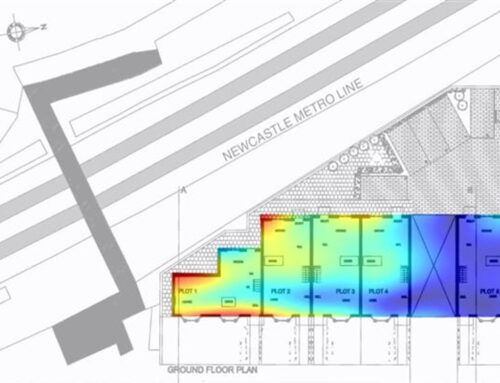
The Project
Microdroplet dispensing systems are at the core of modern high-throughput biological assay processes, where precision in droplet placement and accuracy in results are essential. Xi has worked with Arrayjet Ltd to help them understand mechanical and fluidic processes in their microdroplet dispensing units, to assist with troubleshooting and to provide insight for future design.
Understanding Modular Microfluidics and Microdroplet Dispensing
Arrayjet is a leader in the manufacture of microfluidic droplet dispensing systems, which enable the high-throughput and accurate testing critical to modern medical diagnostics and R&D. The dispensing system is modular and easy to use: a printhead may be simply docked to a fluid aspiration device (JetSpyder™), which draws fluid samples from well plates containing fluid samples. The JetSpyder™ is removed allowing the printhead to then deposit well-controlled arrays of fluid droplets, with a precision on the order of 10 microns, onto slides or other media for analysis. In the operation of a modular fluidic system, however, it is complex and time-consuming to ensure correct mounting for operation, e.g. making sure seals are tight and fluid paths are well-aligned.
Modelling of Sealing and Flow Patterns
Microdroplet dispensing systems are at the core of modern high-throughput biological assay processes, where precision in droplet placement and accuracy in results are essential. Xi has worked with Arrayjet Ltd to help them understand mechanical and fluidic processes in their microdroplet dispensing units, to assist with troubleshooting and to provide insight for future design.
The Project Modelling of Sealing and Flow Patterns
The transfer of fluid between aspiration and printhead modules is performed with a linear array of miniaturized gasket seals, which allows multiple different fluids to be handled in one operation. This represents a mechanically rigorous stage of the microdroplet dispensing process: fluids are drawn or pumped at high rates, resulting in large pressures within the gasket seal pockets. The sealing contact pressures can be simulated with solid mechanics models. When fluid flows through the system, the resulting seal pocket pressure may be computed via Computational Fluid Dynamics (CFD). With these results together, one may assess the plausibility of the gaskets being compromised which may impact printer performance.
Troubleshooting and Product Engineering Design
Modelling always works best alongside real-world data and by incorporating simulation Arrayjet can troubleshoot performance in existing development modules by comparison with measured flow rates, pressures and printing performance. Simulation provides a better understanding of sealing pressures and flow patterns in locations where sensors cannot be directly placed, where risks may include leakage, air ingress, or poorly-controlled fluid distribution to printhead nozzles. This applies to conceptual fluidic manifold geometries as well, which may be modelled and characterized before expenditure on manufacturing, thereby reducing overall R&D costs.
Xi’s Role: Simulation and Analysis
Xi worked collaboratively with Arrayjet as an R&D partner to develop models in COMSOL Multiphysics using the Solid Mechanics and Computational Fluid Dynamics Modules to better understand microfluidic gasket sealing and fluid flow between the aspirator and printhead modules. Arrayjet provided expertise in device design and operation and Xi developed solid mechanics models to characterize the sealing of gaskets with a non-standard geometry as well as CFD models to study the flow of fluid along the entire fluid path between the open sample reservoir to the printhead and back during cleaning.
How Xi Helped
The printhead interface consists of a linear array of nozzles with diameters on the order of tens of microns, allowing for the printing of high-density liquid droplet arrays known as microarrays. A linear array of specially-manufactured gaskets allows several different fluids to be transferred to the printhead in a single operation, providing user flexibility.
When gaskets are compressed, they push back. A seal is maintained if the fluid flowing inside a seal pocket exerts a pressure lower than that the gasket pushes back with. In a microfluidic system with very small, closely spaced gasket pockets, the fluid pressure may push back and deform the rubber, resulting in an unexpected deformation of a neighbouring seal pocket. In highly coupled fluidic manifolds, such behaviour can result in unpredictable fluid transfer and printing behaviour.
Xi worked with Arrayjet to study contact sealing forces of gaskets at a range of compressions and analysed the effect of applied internal seal wall pressure on material deformation. These mechanical studies helped provide guidelines on rubber (a.k.a. hyperelastic) material properties, and necessary compression in practical systems.
Computational Fluid Dynamics (CFD) studies provided the essential complement to the solid hypereleastic gasket compression studies. Flow rates during both sample fluid collection and cleaning were applied to study flow patterns and pressure distributions along the entire fluidic path, including not just the seal pocket but also the printhead manifold and the tubing to the well plates. Understanding pressure drops over all segments of the flow path was necessary to understand the applied pressure in the seal pocket itself. A range of flow rates was considered, with variation in the seal pocket shape as well as nozzle offset and partial blockage. Analysis of the flow patterns under these different possible mounting configurations, which may, for example, represent errant gasket installation, provides insight into whether fluid is evenly distributed to the nozzles, whether undesired recirculation zones form, or if asymmetries in pressure distributions are present.
Skill Set Used
- Parametric analysis of design features
- Large deformation contact mechanics with hyperelastic materials
- Computational Fluid Dynamics (CFD)
- Visualization of flow fields and pressure distributions
- Analysis of multiphysics results for comprehensive and coherent conclusions
Client Benefits
- Support investigating experimentally observed operational challenges
- Collaborative workflow with Xi to gain an overview into the modelling process for application to engineering design
- Models delivered to the client for future in-house modification and adaptation
- Insight for design improvement and development
- Clear, graphical data from simulation results for presentation to all stakeholders
“We approached Xi to better understand the sealing forces & flow patterns within our microfluidic devices. Xi had the knowledge and resources to examine the system accurately and provide in-depth studies. This has been a hugely enlightening process which has allowed us to make well-informed design decisions without the time-consuming iterative testing process.”
Alasdair Burnett
Arrayjet Ltd



